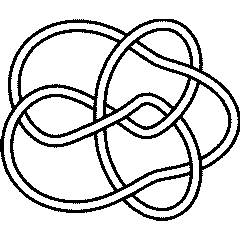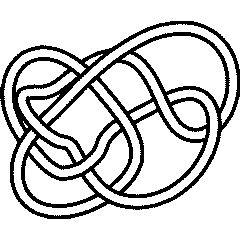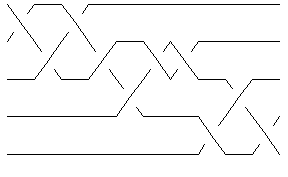Invariants from Braid Theory: Difference between revisions
From Knot Atlas
Jump to navigationJump to search
m (Reverted edits by 217.149.45.68 (Talk); changed back to last version by Drorbn) |
VitrrAccna (talk | contribs) m (zelvidompa) |
||
| Line 1: | Line 1: | ||
domlilatr |
|||
{{Manual TOC Sidebar}} |
{{Manual TOC Sidebar}} |
||
Revision as of 12:12, 16 December 2008
domlilatr
The braid length of a knot or a link is the smallest number of crossings in a braid whose closure is . KnotTheory` has some braid lengths preloaded:
(For In[1] see Setup)
| ||||
Note that the braid length of is simply the length of the minimum braid representing (see Braid Representatives):
In[2]:=
|
K = Knot[9, 49]; {BraidLength[K], Crossings[BR[K]]}
|
Out[2]=
|
{11, 11}
|
 9_49 |
 10_136 |
The braid index of a knot or a link is the smallest number of strands in a braid whose closure is . KnotTheory` has some braid indices preloaded:
|
| ||||||||
Of the 250 knots with up to 10 crossings, only 10_136 has braid index smaller than the width of its minimum braid:
In[5]:=
|
K = Knot[10, 136]; {BraidIndex[K], First@BR[K]}
|
Out[5]=
|
{4, 5}
|
In[7]:=
|
Show[BraidPlot[BR[K]]]
|

| |
Out[7]=
|
-Graphics-
|
